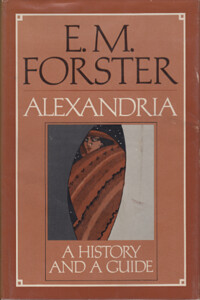Status
Call number
Publication
Description
"Alexandria is still alive and alters even when one tries to sum her up... Only the climate, only the north wind and the sea remain as pure as when Menelaus, the first visitor, landed three thousand years ago..." - E.M. Forster In the autumn of 1915, in a slightly heroic mood, E.M. Forster arrived in Alexandria, full of lofty ideals as a volunteer for the Red Cross. Yet most of his time was spent exploring the magic, antiquity and complexity of the place in order to cope with living in what he saw as a "funk-hole". With a novelist's pen, he brings to life the fabled, romantic city of Alexander the Great, capital of Graeco-Roman Egypt, beacon of light and culture symbolized by the Pharaohs, where the doomed love affair of Antony and Cleopatra was played out and the greatest library the world has ever known was built. Threading 3,000 years of history with vibrant strands of literature and punctuating the narrative with his own experiences, Forster immortalized Alexandria, painting an incomparable portrait of the great city and, inadvertently, himself.… (more)
User reviews
Each historical section is linked to sections in the guide, and Forster claimed that "the 'sights' of Alexandria are in themselves not interesting, but they fascinate when we approach them through the past." Forster spent much time on trams in Alexandria, and the great love of his life, Mohammed el Adl, was a tram conductor on the Bacos route. It is fitting, then, that the tramlines should provide the web holding the guidebook together. Forster takes us through the city by tram, pointing out interesting buildings and sites to left and right. The guide also contains maps of the ancient and modern city, and plans of the Greco-Roman Museum and the Wadi Natrun monasteries.
The book had a difficult birth: Forster's Alexandrian publisher suffered a fire in which they thought the books had been burned. After recouping insurance compensation, they discovered that they had in fact survived. They then decided to burn the books deliberately. In 1935, members of the Royal Archaeological Society of Alexandria decided to reprint the book. Forster put some work into revisions, but this second edition did not sell well, and it was only after the book was published in the US that it achieved moderate sales.
More than any other guidebook, Forster's comes across as a labor of love. Lawrence Durrell wrote of the guidebook that Forster "must have been deeply happy, perhaps deeply in love . . . Paradoxically, if that is the word, the book is also saturated with the feeling of loneliness, that of a cultivated man talking to himself, walking by himself."
